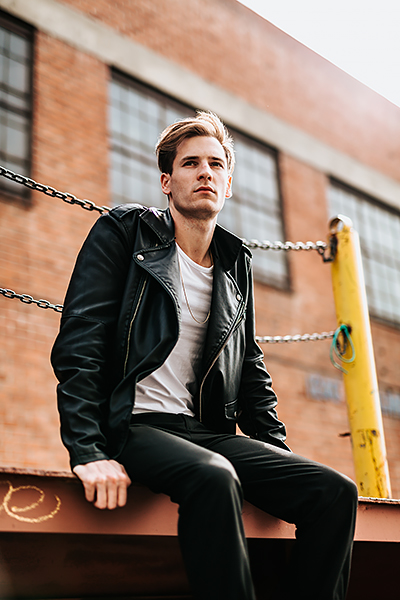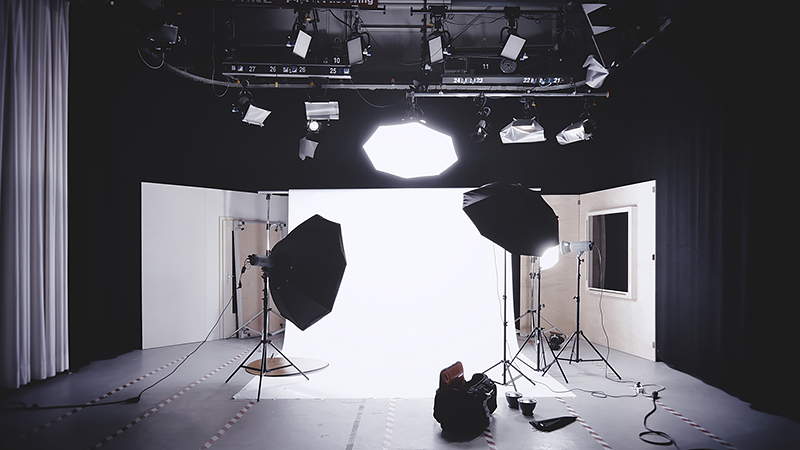Lighting makes all of the difference when it comes to the field of photography. A good image can be ruined by bad lighting - and a bad one can look good if the lighting is on point. That's why whether you're a photographer or a film-maker, it's vital to make sure that you know the basics of professional lighting.
With that in mind, we've pulled together this guide sharing our ten top tips for getting the perfect lighting. Let's jump right on in.
#1: Use diffusion
Diffusion scatters light across a wider surface, illuminating a larger area with a softer light. This can reduce glare and lead to a softer, lighter feel than if you'd shone a spotlight into a subject's face. It also helps to reduce shadows, which is why product photographers often use softboxes.
#2: Texture can be emphasisedFront lighting takes the emphasis away from texture, while lighting from above, below and to the side can help to emphasise it. This is worth remembering for nature photography and product photography in particular.
#3: Consider three-point lightingThree-point lighting (with a back light, a fill light and a key light) is a versatile for choice for a range of situations and is particularly common in portrait photography to illuminate the subject without adding any unwanted emphasis. It's also the default setup for shooting video.
#4: Watch out for glareGlare occurs when bright lights shine off reflective surfaces such as glasses, mirrors and windows and back into the lens of the camera. We mentioned this in tip one, so remember you can use a more diffuse lighting setup to deal with glare if it's a problem.
#5: Use natural lightNatural light can't be relied upon, but it's usually the option you should go for if you get a choice. Artificial lighting should be used either to enhance natural lighting or as a last resort. It's a small change that will make a huge difference.
#6: Experiment with different flash settingsYour flash should be used as a last resort, but that doesn't mean that you should never use it. When you do use it, take some time to experiment with the different settings on your camera and to make a call on the best settings to use on any given shoot.
#7: Different setups for different jobsPortrait photography and product photography are very different. In fact, every different style of photography requires a different style of lighting, and so many different factors go into any shoot that you'll also need to consider everything from the location to the time of day and the angle you're shooting from.
#8: Colours are importantEven white light has a colour, which is why we have to deal with colour temperatures and white-balance control. On top of that, it's not our only choice, and different colours of light can have different impacts on the final composition of the image. At its most basic level, reds produce a warmer effect and blues produce a colder one, but don't be afraid to experiment with different setups.
#9: Shadows add depthUsing your lighting setup to create shadows can add volume and depth to your shoots, even leading to a 3D effect under certain circumstances. You can create shadows by lighting from the side, above or below, an approach often used by portrait photographers.
#10: Talk About it In Your ResumeConsider making the most of your lighting knowledge by talking about it in your resume. Better still, don't just talk about it: show it. Make sure that all of your portfolio shots are well-lit and that they showcase your work in a wide range of different lighting scenarios. If you're struggling to build the perfect resume, don't be afraid to try professional resume tools or to look for advice on CareersBooster.com.
Conclusion
Your approach to lighting makes all of the difference when it comes to the quality of your final photos, which is why it's a good idea to familiarise yourself with the basics of lighting and to experiment with different setups. Once you've taught yourself the basics, the rest comes with time as you practice and refine your approach. Good luck.
Based in London,
Kurt Walker has spent the last six years working as a career coach at a
cv writing service. A keen writer and freelance photographer, he specialises in working with photographers to develop their resumes and helping them to follow their dreams.


